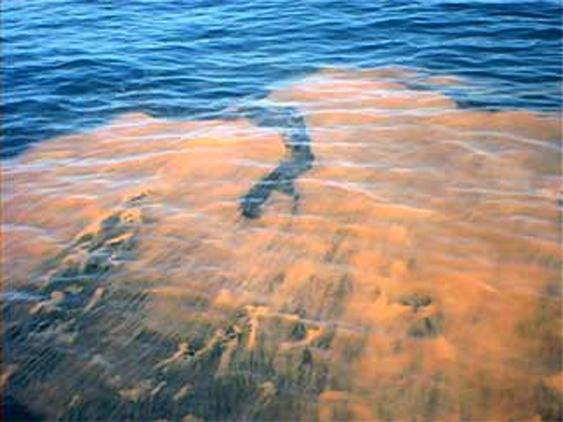
(John Haughey) – The U.S. House of Representatives has approved the first federally funded economic impact study of toxic algae blooms since 2006 and a proposal to increase funding for research into ways to mitigate or stop red tide outbreaks by $2 million to $12 million.
The allocations are included in HR 3055, the Commerce, Justice, Science and Related Agencies Appropriations Act 2020, which passed the House last week in a 227-194 vote. The bill now goes to the U.S. Senate.
The measures were supported by Florida’s 27-member Congressional delegation although the overall vote for the massive $383.3 billion appropriations package was split along party lines, with all 13 Democrats voting yes and 13 of 14 Republicans voting no. Rep. Francis Rooney, R-Naples, did not cast a ballot.
The economic impact study and research initiatives were introduced by Rep. Stephanie Murphy, D-Winter Partk, and co-sponsored by fellow Florida Democrats Reps. Darren Soto and Charlie Crist and Florida Republicans Rep. Brian Mast and Bill Posey.
The $1.75 million allocation is for the National Oceanic and Atmospheric Administration [NOAA] to sponsor an independent study on the economic impacts of algal blooms after a 16-month red tide outbreak that lasted through February befouled Florida’s southwest, northwest and east coasts simultaneously, devastating the state’s $18 billion “coastal economy.”
“We need the best available data on the potential health and economic hazards associated with this environmental crisis,” Murphy said in a statement. “These bipartisan measures will move us a step closer towards solutions that will help reverse the way algal blooms are endangering the health of all Floridians and the well-being of local businesses that drive our tourism industry.”
The study is the first in 13 years to examine the economic impacts of harmful algal blooms on public health, drinking water, commercial fisheries, property values, recreation and tourism.
The second measure increases the amount of funding that NOAA’s National Centers for Coastal Ocean Science will dedicate to research on ways to reduce the harmful effects of algal blooms from $10 million to $12 million.
Grant recipients will conduct research to identify conditions that increase a bloom’s toxicity; model toxin movement from the water into shellfish, fish and marine mammals; and improve toxin monitoring and forecasts. The dense scum, strong odors and toxins produced by harmful algae blooms [HABs] can contaminate drinking water, trigger fisheries closures and disrupt tourism.
“Our bipartisan legislative items included in this bill will directly improve the lives of all Floridians, as we continue to combat harmful algae bloom forming in our state,” said Rep. Darren Soto, D-Kissimmee. “We will continue to prioritize funding that upholds the voices of Central Florida’s families.”
“The measures authored by Congresswoman Murphy are essential to the future health of Florida’s waters,” Nature Conservancy Executive Director Temperince Morgan said. “Proposed funding from these measures will support research and data that will help guide our state toward solutions that address the impacts of harmful algal blooms. Residents, visitors, our environment, and our economy will benefit.”
In mid-June, the House also approved a $6.25 million allocation, sponsored by Rep. Vern Buchanan, R-Longboat Key, in a separate appropriation package for the National Institutes of Health to research the long-term health effects from red tide and other harmful algae blooms.
The federal money will augment the state’s efforts in combating red tide and blue-green algae bloom coming from Lake Ockechobee.
Last week, Gov. Ron DeSantis signed bills creating the Florida Red Tide Mitigation and Technology Development Initiative, which will allocate $18 million over the next six years – $3 million a year beginning this coming fiscal year – to research and mitigate toxic algal blooms.






Facebook
Twitter
Pinterest
RSS